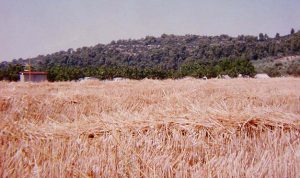
History of farming: A field of wheat
When did people start farming?
People did not farm as a major way of getting food until around 12,000 BC. About that time, there was a climate change that made more food plants grow than before.
Early African environment
Hunting and gathering
Stone Age timeline
The Quaternary period
Everybody got more to eat with less work than earlier hunters and gatherers and fishers. A few of these people decided to settle down in one spot and farm their food, instead of traveling around picking wild food. Or, as Ian Gilligan suggests, they may have started farming mainly to grow hemp, flax and cotton for clothing.
Linen and flax
Where does cotton come from?
What is hemp?
Where did agriculture first get started?
People invented farming in different places: in West Asia about 12,000 BC, in Africa about 10,000 BC, in South America and China about 8000 BC.
West Asian farming
African farming
South American farming
Chinese farming
From there farming spread (often because farmers conquered their neighbors). Farming reached Europe about 7000 BC, reaching northern Europe about 4500 BC. It reached Sudan about 4000 BC, and Native Americans about 1 AD.

Egyptian painting of a man plowing behind oxen while a woman scatters seeds. The pole runs from the plow between two cows up to a yoke over their necks, so they can pull the plow through the ground.
What plants did early farmers grow?
In West Asia, Africa and Europe, people planted first figs, and then grains: wheat, barley, millet, sorghum, oats and rye, and legumes like peas, lentils, and chickpeas.
History of wheat
Where does corn come from?
What is sorghum?
Where is rice from?
In South America, it was potatoes, corn, squash, sweet potatoes, beans, yuca root and peanuts. And in China, farmers planted millet and rice and soybeans. But people didn’t just plant food and cotton, flax, and hemp for clothing. They also grew medicines like coca, tobacco, opium, and coffee.
What is coca?
Who used opium?
Where is coffee from?

A bone sickle – the flint teeth are missing now
How did early farmers plant and harvest?
Early farmers didn’t use many tools to help them. They poked holes in the ground with sticks to plant seeds in.
More about planting
What are seeds?
Farmers pulled weeds by hand, and they harvested using their bare hands. Women probably did most of this work.
Irrigation canals
By around 3000 BC, though, people started to build dams and dig irrigation canals. These canals brought water to places where it didn’t rain enough to grow crops. West Asian farmers started to use plows pulled by oxen. In Africa people used donkeys to pull their plows,to dig up the ground for planting.
Irrigation canals
Plows and the history of farming
Where do donkeys come from?
Everywhere, people used flint sickles. bone with little flint triangles set into them to make them into a kind of wedge, to cut the grain for harvesting. Men, with their strong arms, now did most of the plowing and harvesting.
Flint tools
Why do farmers get into debt?
Women did the weeding in between. Because farming had a tendency to get people into debt, there were a lot of arguments about this debt.
Roman harvesting machines and iron tools

Roman carving of a harvesting machine
By the time of the Roman Empire, farmers had more efficient tools. They had iron tips on their plows. Rich estates had sharp-toothed harvesters that could cut the grain as they drove through the fields.
Who invented iron tools?
Roman farming
Some poorer peasants began to use bronze or iron sickles. But many farmers who were really poor still used the cheaper flint ones.
Water mills
The invention of water mills in China, Central Asia, Europe, and North Africa saved women the hard work of grinding grain into flour. (Instead, they spent more time spinning.) Sharp iron hoes made weeding easier.
More about water mills
Big dams and irrigation meant that some of the most productive places on earth were places where it was very sunny and almost never rained – Egypt, Sudan, Yemen, and Central Asia.
Medieval harrows and three-crop rotation
The Middle Ages brought more new technologies to farming, especially the moldboard and the harrow. Harrows turned over the dirt as you plowed. In Europe, people started to use three-crop rotation, which was a more efficient use of land.
Moldboards and harrows
Sugar and Islam
Medieval cotton
At the same time, people started to grow a lot of crops in new places. Farmers started to grow sugar and cotton in West Asia, Egypt, and China, and rice in Europe.

Inca people harvesting potatoes (De Ayala)
The Columbian Exchange in the 1500s AD
When European traders reached North and South America in the late 1400s AD, they also brought many crops back and forth. Traders brought rice, sugar, and coffee from Eurasia and Africa to the Americas.
Where is chocolate from?
History of peanuts
Where is tea from?
They brought coca, chocolate, sweet potatoes, peanuts, yuca root, tomatoes, chili peppers, and potatoes from the Americas to Asia and Africa. But still most people had to work on farms in order to grow enough food for everybody to eat. Plus, people started to change their clothes more. More people had to work growing cotton for clothing. Most of these people were very poor. In the 1800s AD, many of them were enslaved.

Enslaved African-Americans picking cotton. See the little girl?
History of farming: the internal combustion engine
Finally, in the 1800s AD, the invention of the internal combustion engine made it possible to give up farm animals for gas-powered tractors and harvesters. These big, powerful machines replaced many plowmen and harvesters as well as animals.
Who invented the engine?
Modern steel production
The history of rubber
Where does oil come from?
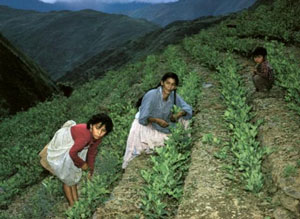
Coca farming
By the mid-1900s, only a tiny number of people worked on farms in the United States. And today, across the whole world, less than half the people work on farms growing food or cotton for clothing.
Climate crisis and farming
But that use of oil and coal also created a climate crisis. Today, rising temperatures and changing weather patterns mean that many people can’t farm food or clothing where they live anymore. Many millions of people will soon have to leave their homes and move somewhere else.
Did you find out what you needed to know about the history of farming? Let us know in the comments.

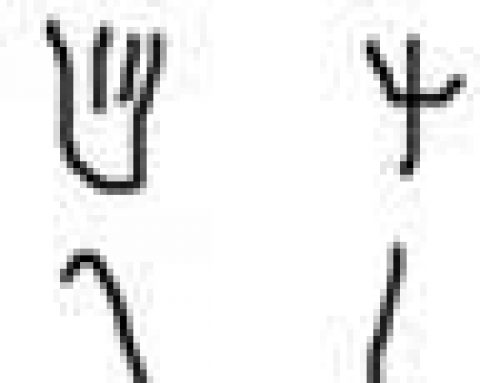
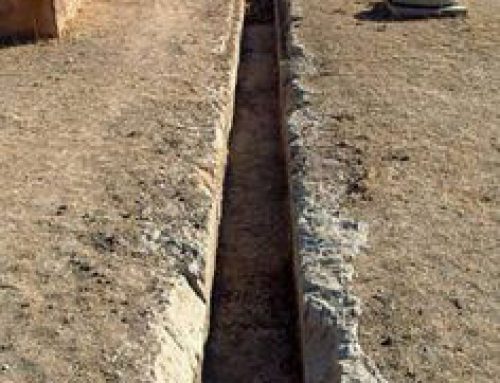
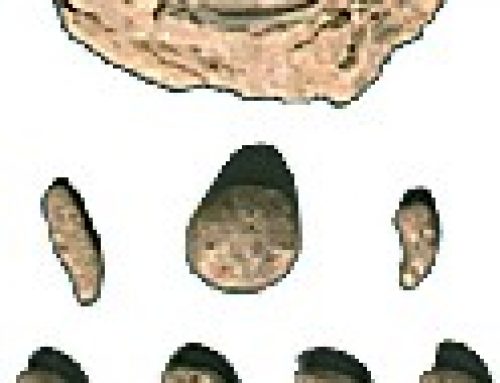

[…] 100,000 years, as that’s when the early man assembled wild grains. Harvests were first planted roughly 12,000 years prior, and people started taming creatures, for example, pigs, sheep and chicken some 10,000 years back. […]
Do you believe the invention of farming and agriculture has done more good or more harm to us as a species?
It’s a little too soon to tell, isn’t it? If we measure by how many humans there are and how long we live, then sure, it’s been a huge success. We’ve gone from maybe seven million people before farming to about seven *billion* people now. That’s a thousand times as many people. And we live longer, on average, too.
But that road has led us to global warming, and it’s possible we may return to only having seven million again one of these days. Then maybe it will seem like a big mistake.
Thanks so much I’m a 7th grader doing a one page essay on this , this articulate was ver informative and use full I did not plagerise
I’m delighted to hear it, Ganon! As long as you rewrote everything in your own words, I’m sure it will be fine.
[…] get tired. We can start making mistakes when fatigued. In the past, people used to prepare land for farming manually. Later they developed tools to make it easier. Then they realized they could leverage […]
have a therory regarding the evolution of farming and it is as follows……I believe it started when some hunter-gatherers captured certain wild animals and began domesticating them….I believe that the animals were the lesser vicious animals that were grazers (sheep-horses-cattle etc), and of course these animals had to be fed….I think that the hunter-gathers added domesticaters-gatherers (for animal feed) and ultimately farmers to their titles….I think that the first farming was done when grasses were planted to provide feed for the animals and were henceforth adopted by humans as food….In other words I believe that farming developed BECAUSE of the domestication of animals……..Barley, wheat oats,rye, corn and rice are all grasses and are all suitable or excellent foods for people and various animals…..Swine were probably domesticated because their diet could consist of almost anything including all the scraps from animal and plant food used by the humans and the livestock…….I just don’t see farming as developing as an entirely independent concept free of any earlier history and experience with animals and their diets…something hunters would have been totally knowledgeable about…..They knew what animals to capture (probably the young after a female parent have been taken) and what to feed them.
I can see you’ve thought about this a lot, Mr. McDowell! Maybe you’d be interested in reading what some other people have been thinking? You might like https://www.amazon.com/History-World-Agriculture-Neolithic-Current/dp/1583671218/ref=as_sl_pc_ss_til?tag=historyforkids&linkCode=w00&linkId=DS24QB5SJSKVBZ2P&creativeASIN=1583671218